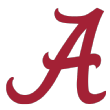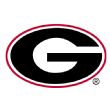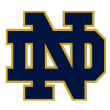According to ESPN’s Stats and Information Group, there are currently 11 teams with at least a 4% chance at reaching the College Football Playoff: Alabama (88%), Ohio State (85%), Clemson (72%), Wisconsin (40%), Georgia (27%), Notre Dame (25%), Oregon (18%), USC (15%), BYU (14%), Cincinnati (5%) and Florida (4%).
Even though we’re really talking about three huge, familiar favorites and everybody else, this is still a pretty incredible list when you think about it — you’ve got an AAC team, a non-major indie and two teams that haven’t even begun their dang seasons yet, plus the 12th team on the list is Indiana! — but hey, 2020 is an incredible year.
(“Incredible” doesn’t have to mean “good,” mind you.)
A title run features all sorts of obstacles both foreseen and unforeseen, and the biggest questions facing each team at the moment are a mix of the two. Let’s look at each of primary contenders and the Biggest Obstacle category into which they each most neatly fit.
A quick note: We’re going to skip Wisconsin in this discussion for now. The Badgers are loved by both SP+ and FPI, but with the magnitude of their coronavirus issues, and the fact that we don’t know if or when they’re going to be able to realistically start playing again, it feels awfully odd talking about run-of-the-mill on-field issues. Once they’re back on the field, we’ll resume our Badger conversations.
Contenders vs. complacency

Ohio State
Record: 2-0
Rank: First in SP+ and FPI
It was possible to come away from Ohio State’s season-opening win over Nebraska with a few quibbles. Granted, the Buckeyes looked great overall and won handily, but the running backs weren’t particularly effective, and Nebraska’s offense generated high levels of efficiency, particularly in the first half. Was a rebuilt Buckeyes defensive line going to play at the level we’ve come to expect? Were OSU’s new running backs too many notches below the bar J.K. Dobbins set in recent years?
For all we know, those could still end up being issues as the season progresses. But against what was, statistically, their best opponent of the season, Ohio State not only kept Penn State at arm’s length the entire game but also did so while rushing the ball well and preventing PSU from doing the same. Ohio State generated a solid rushing success rate of 46% and held Penn State to a ghastly 23%. PSU quickly abandoned the run game altogether, and a rebuilt Buckeyes pass rush teed off on a one-dimensional offense, sacking Sean Clifford five times. Tommy Togiai had three.
The stats evened out a bit after a dominant first half, but the score never really did. The Buckeyes cruised and now face a regular-season slate in which their lowest remaining projected win probability, per SP+, is 85%. They are favored by an average of 28.1 points over the next six weeks. Upsets and injuries happen, and you can never say a team is guaranteed to win a series of games, but barring a plot twist — a 2020 specialty — the biggest opponent Ohio State will face between now and the Big Ten title game is complacency. If the Buckeyes bring their A-game, they will not be touched.
Contenders vs. injuries

Alabama
Record: 6-0
Rank: Second in SP+ and FPI
Because of his sheer transcendance potential, I named Alabama receiver Jaylen Waddle one of my most important players in the CFP chase.
Early in the season, he, well, transcended, gaining 557 yards on just 25 catches and scoring four touchdowns. Unfortunately for all of us, however, he was likely lost for the season with an ankle injury on the first play of last week’s Tennessee game.
Alabama hasn’t missed him just yet — the Tide outscored Tennessee and Mississippi State by a combined 89-17 in his absence, with Mac Jones completing 49 of 62 passes for 678 yards and four touchdowns. DeVonta Smith caught 18 balls for 276 yards and four scores in these two games, John Metchie III caught 10 for 169 and Slade Bolden, now bumped up into further rotation, caught nine for 114.
Like Ohio State, Alabama is heavily favored in every remaining regular-season game. But one assumes that between the SEC title game and either one or two CFP games, either Metchie, Bolden or a younger player yet to enter the rotation will have to make some big plays. It will be nice getting younger guys reps between now and then, but it might be a while before we learn how much the Tide miss Waddle.

Clemson
Record: 7-0
Rank: Third in FPI, fourth in SP+
Yes, we’re counting Trevor Lawrence’s coronavirus diagnosis as an “injury.” It’s awkward, but again, it’s 2020.
Lawrence’s absence against Boston College introduced us to Baby Cam. Freshman D.J. Uiagalelei, all 6-foot-4, 250 pounds of him, completed 30 of 41 passes for 342 yards and two scores, took only one sack against a solid BC pass rush, and rushed five other times for 38 yards and a TD. Those rushes included a pair of fourth-and-1 conversions, including a perfect zone-read keeper that he took 30 yards for a score.
Clemson spotted BC a 28-10 second-quarter lead, then scored the game’s last 24 points to win. The deficit had little to do with Uiagalelei — it was driven far more by three BC touchdowns in four drives and a 97-yard return of a Travis Etienne fumble. Overall, Etienne (seven catches for 140) and Cornell Powell (11 for 105) gave Uiagalelei a pair of premium security blankets, and when all else failed, he was able to throw his large frame forward for a few yards. A Cam Newton comparison is unfair to anyone, but it’s hard not to at least see the Cam potential in this blue-chipper.
Now the degree of difficulty rises. Notre Dame is the best team, with the best defense, left on Clemson’s schedule. The Irish will probably do a better job of not completely forgetting about Etienne leaking out of the backfield. They will likely cover Clemson’s not quite totally proven receiving corps pretty well. Uiagalelei will have to make tougher throws into tighter windows and might have to rely on his legs more. There’s a chance he does so brilliantly, but it’s still a test he has to pass.
Contenders vs. elite QB play

Georgia
Record: 4-1
Rank: Fifth in FPI, sixth in SP+
It’s nice having the best defense in the country to lean on. Georgia scored touchdowns early in both the first and second halves at Kentucky on Saturday, and that was more than enough production for the Dawgs to cruise to a 14-3 win. They held Kentucky to 229 total yards (3.6 per play), Stetson Bennett attempted only 13 passes, and Georgia stayed as vanilla as humanly possible in advance of this Saturday’s huge rivalry game against Florida.
Technically Bennett’s stat line was fine. He went 9-for-13 for 131 yards and scored on a two-yard rush in the first quarter. But he also threw two picks, and, well, let’s refer back to what I said after Georgia’s loss to Alabama:
Against teams worse than Alabama, Bennett was able to come in and play pretty straightforward ball and, with help from an awesome special-teams unit, make sure to give an awesome defense good field position. He could continue to do that the rest of the season — Florida is the only remaining opponent in the SP+ top 20, and he could easily lead Georgia to a 9-1 record. But Bama would likely await in the SEC championship game, and there’s no real reason to think that Bennett will fare any better the second time. … [Kirby] Smart might have to take a risk on a higher-ceiling, lower-floor player, be it [J.T.] Daniels or [D’wan] Mathis (probably Daniels), if he wants to get from 9-1 to 10-1 and reach the College Football Playoff.
I saw nothing against Kentucky to make me think any differently. And if Saturday’s win over Missouri is any indication, Florida’s defense might be in the process of rebounding as well.

Notre Dame
Record: 6-0
Rank: Sixth in FPI, seventh in SP+
Ian Book has mastered the art of fine quarterback play. Good, even. He ranked 12th in Total QBR while helping to guide Notre Dame to the CFP in 2018, then ranked 19th last year. This year he’s 17th.
Is that good enough for a contender, though? With each passing year, college football becomes more of a quarterback-driven sport. The other three playoff QBs in 2018 ranked first (Kyler Murray), second (Tua Tagovailoa) and eighth (a freshman Trevor Lawrence) in Total QBR. Last year’s CFP QBs all ranked in the top five, and the pilots of this year’s top three teams are currently first (Justin Fields), second (Jones) and seventh (Lawrence).
The biggest regular-season game of Book’s senior year comes interestingly timed. Notre Dame will host Uiagalelei’s Clemson, not Lawrence’s, meaning Book is the most proven and experienced QB in the game. To reach the CFP, the Irish will have to probably split two matchups with the Tigers, but this is the moment for Notre Dame.
The Irish have been extremely run-heavy so far this year (22nd in run rate on standard downs, ninth on passing downs), but you don’t beat Clemson with one-dimensional play. Can Book make big passes when necessary — to Javon McKinley or Ben Skowronek for a field-flipping gain, to tight ends Michael Mayer and Tommy Tremble or receiver Avery Davis on big third downs? Notre Dame’s defense is dynamite, ranking eighth in defensive SP+ and holding five of six opponents to 13 or fewer points. But you have to score to beat Clemson, and Book’s recent track record against top-notch defenses — a 69.7 passer rating against Michigan in 2019, 83.7 against Clemson in 2018, 116.4 against Georgia in 2019 — is not great. Now’s the time to change that.
Contenders vs. the actual start of the season


Oregon and USC
Record: 0-0
Rank: Oregon is 10th in FPI and 14th in SP+, USC 11th in FPI and 15th in SP+
Among the teams we considered potential contenders in the preseason, most of them face-planted quickly. Oklahoma and Texas both did well against bad teams in their first games, then bombed soon after. Auburn was good in its first game, then terrible in its second. Texas A&M was shaky in game one, then got Bama’d. LSU immediately fell flat on its face. Penn State got Indiana’d.
The only teams that looked the part right from the start and have continued to look the part are, basically, Ohio State, Alabama, Clemson and maybe Georgia. Everyone else has been burned by their own flaws pretty quickly.
Are either Oregon or USC of the OSU-Bama-Clemson vintage? They’ll probably have to be something pretty close to that to run the table in the Pac-12 and seriously contend for a CFP berth. A one-loss Pac-12 champion could certainly qualify with some breaks, but the odds are decent that it’ll take a 7-0 run to make it.
Per SP+, both Oregon (vs. Stanford) and USC (vs. Arizona State) start their seasons with the second-best opponents on their respective schedules. They are both healthy favorites, but neither can afford to ease in. This could be tricky, as both teams are balancing one proven unit (Oregon’s defense, USC’s offense) with a unit facing a remodel. Can Joe Moorhead’s Oregon offense and Todd Orlando’s USC defense both hit the ground running? The latter likely has the tougher test this Saturday, facing dangerous quarterback Jayden Daniels and an Arizona State attack that has also taken on change this offseason.
Contenders vs. a surprisingly flawed defense

Florida
Record: 3-1
Rank: Fifth in SP+, ninth in FPI
In three games before a two-week break, Florida put together a surprising set of strengths and weaknesses. The Gators were better offensively than anybody could have imagined, ranking second in points per drive and sixth in success rate while averaging over 42 points per game. The defense, however, had bombed. Florida was projected third in defensive SP+ thanks to a combination of recent success and strong returning production, but the Gators headed into last week’s game with Missouri ranked 94th in success rate allowed and 89th in points allowed per drive. This was already a flaw fatal enough to drive a 41-38 loss to Texas A&M; would it quickly eliminate them from title contention altogether?
The road to the CFP is still pretty tricky — it will almost certainly require wins over Georgia next week and over Alabama in a hypothetical SEC championship game — but Florida looked just about as good as anyone in the nation on Saturday in a 41-17 rout of Missouri. Kyle Trask completed passes to nine different players en route to 345 yards and four touchdowns, a previously iffy pass rush brought Mizzou’s Connor Bazelak down three times, and Florida more than doubled the Tigers’ yardage, 514-248. Mizzou only stayed within 24 because of a second-quarter pick-six and a touchdown late in garbage time.
Mizzou came in averaging 5.7 yards per play but managed only 3.9 in Gainesville, 3.1 through three quarters. Is the Gators defense fixed? Because if so, Florida’s back among contenders.
If the 2020 season has taught us anything, however, it’s that a unit has to prove itself more than once. Isn’t that right, Michigan? And Texas? And Oklahoma? And LSU? And so on and so forth?
Contenders vs. institutional bias


Cincinnati and BYU
Record: 5-0 and 7-0, respectively
Rank: Cincinnati is ninth in SP+ and 19th in FPI, BYU 12th in SP+ and 17th in FPI
I’ve written this many times, but it will forever remain true: The CFP committee more or less gave the game away in 2017. On Nov. 18 of that season, unbeaten UCF, No. 15 in the CFP rankings, beat a Temple team that would finish 71st in SP+ by a score of 45-19. That same day, No. 16 Mississippi State narrowly beat Arkansas (final SP+ ranking: 63rd), 28-21, with two late touchdowns. In the next Tuesday’s CFP rankings release, UCF remained 15th — and three-loss Mississippi State hopped to 14th.
Despite rampant form and an unbeaten record, UCF could climb no higher than 12th in 2017. In the Peach Bowl, the Knights beat the Auburn team that had taken down both Alabama and Georgia; in 2018, they won another 12 games in a row — and topped out at eighth.
It’s hard to imagine the committee ever taking a team from outside a power conference seriously enough to rank it in the top seven or so, much less top four. But it’s also hard to imagine a more perfect time for a mid-major to play as well as both BYU and Cincinnati have this year.
The Bearcats and Cougars both enter November in rarefied air. They rank ninth and 12th, respectively, in SP+, despite still being held back by preseason projections that ranked them 33rd and 53rd. They will both get to the end of the regular season without getting to play a single power conference team, but they’ve both done everything asked of them and then some.
A few years ago, I created a measure I call Résumé SP+. It derives your résumé by looking at the teams you have played and projecting what the average top-five team, per SP+, would have done (in terms of scoring margin) against that schedule. It then compares that to what you’ve actually produced.
Here are the current Résumé SP+ rankings among teams with a minimum of two games (sorry, Wisconsin):
1. Ohio State (+10.6 PPG above what the average top-five team would done against their schedule)
2. Alabama (+5.4)
3. Cincinnati (+2.4)
4. Clemson (+0.7)
5. BYU (-0.9)
Notre Dame (-2.3) is sixth, Georgia (-4.5) eighth. Cincinnati and BYU might rank 59th and 90th, respectively, in SP+ strength of schedule, but they have played like a top-five team, or really close to it, against said schedules. They should be in this conversation.
Oklahoma State’s loss to Texas on Saturday was statistically unlikely, but it was also a massive favor to Cincy and BYU. If the SEC and Big Ten only produce one team with one or fewer losses, and if the Pac-12 doesn’t produce an unbeaten champion, it wouldn’t be crazy, even with the committee’s obvious preferences, if one of these teams cracked the top four or came very close. And it would be justifiable, too, if they keep playing as they have been.
